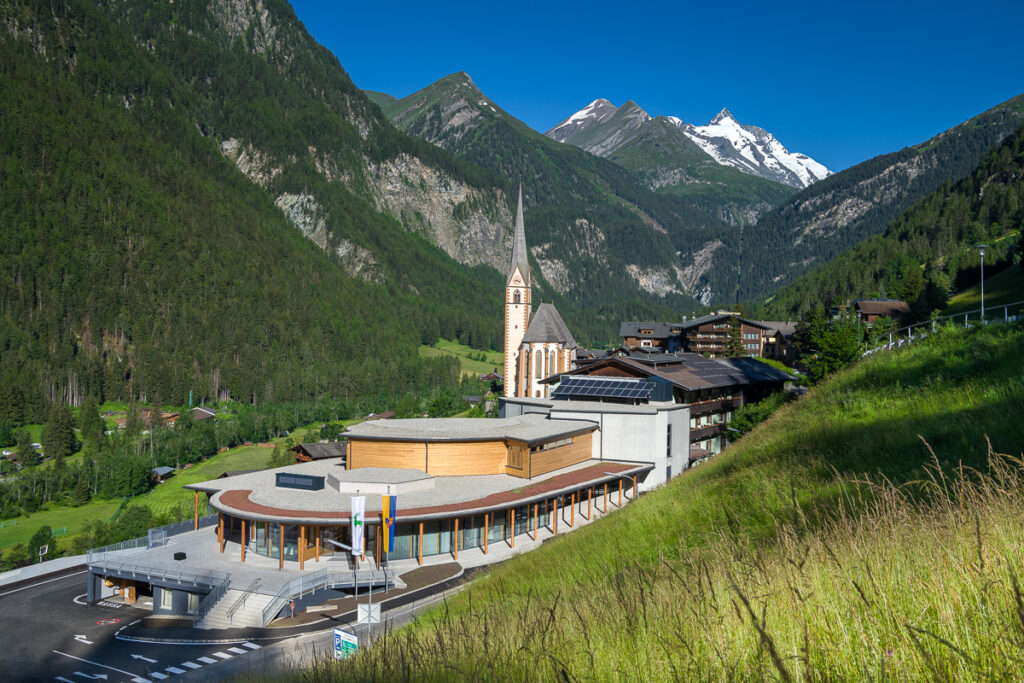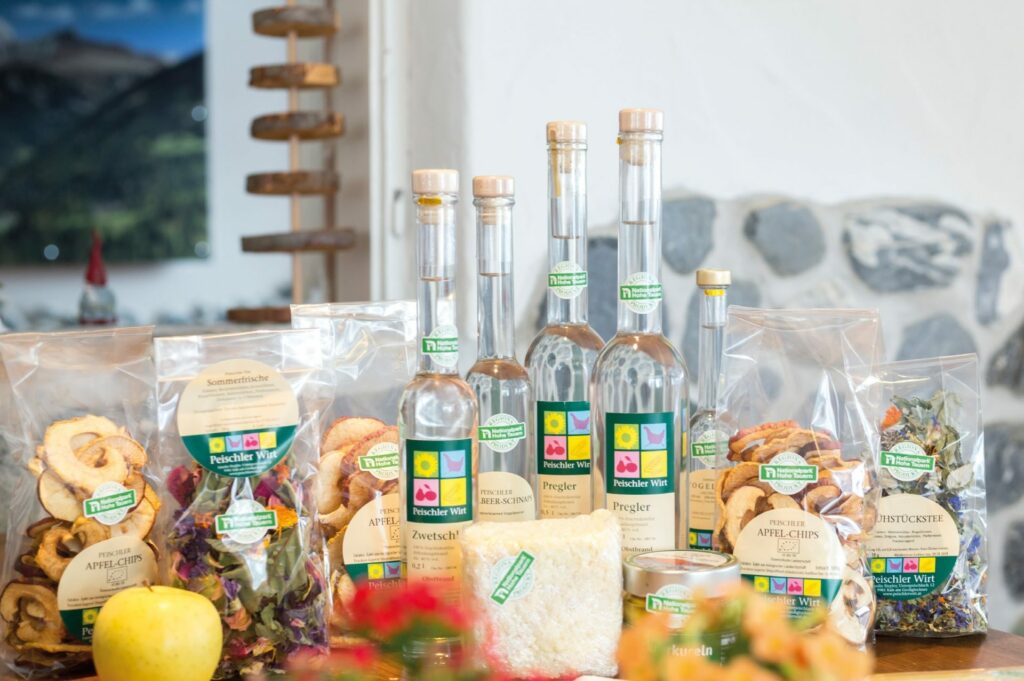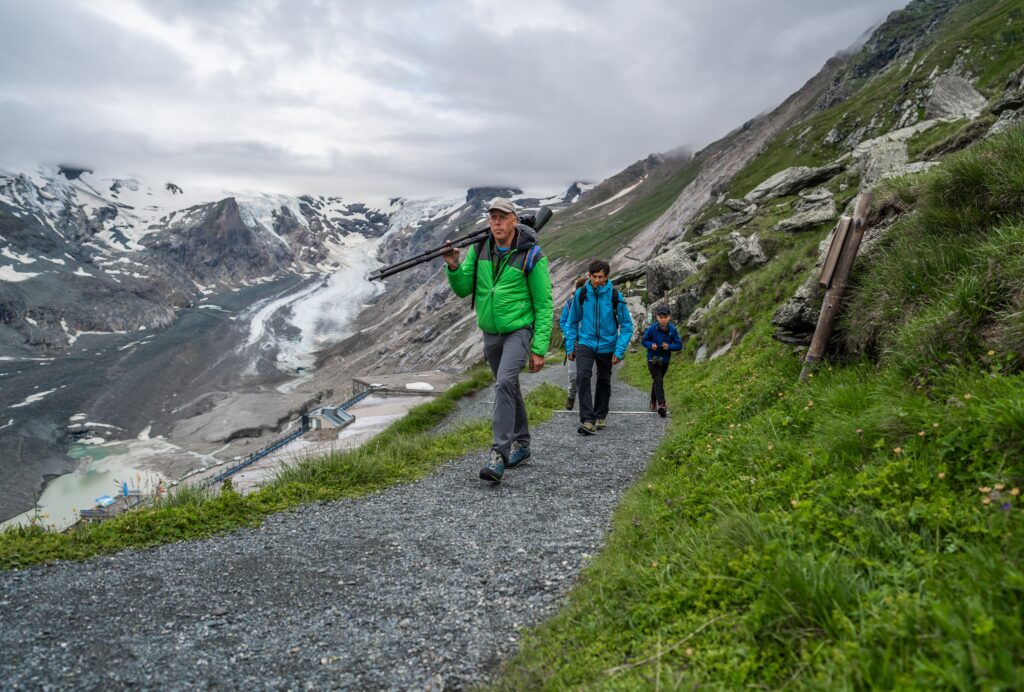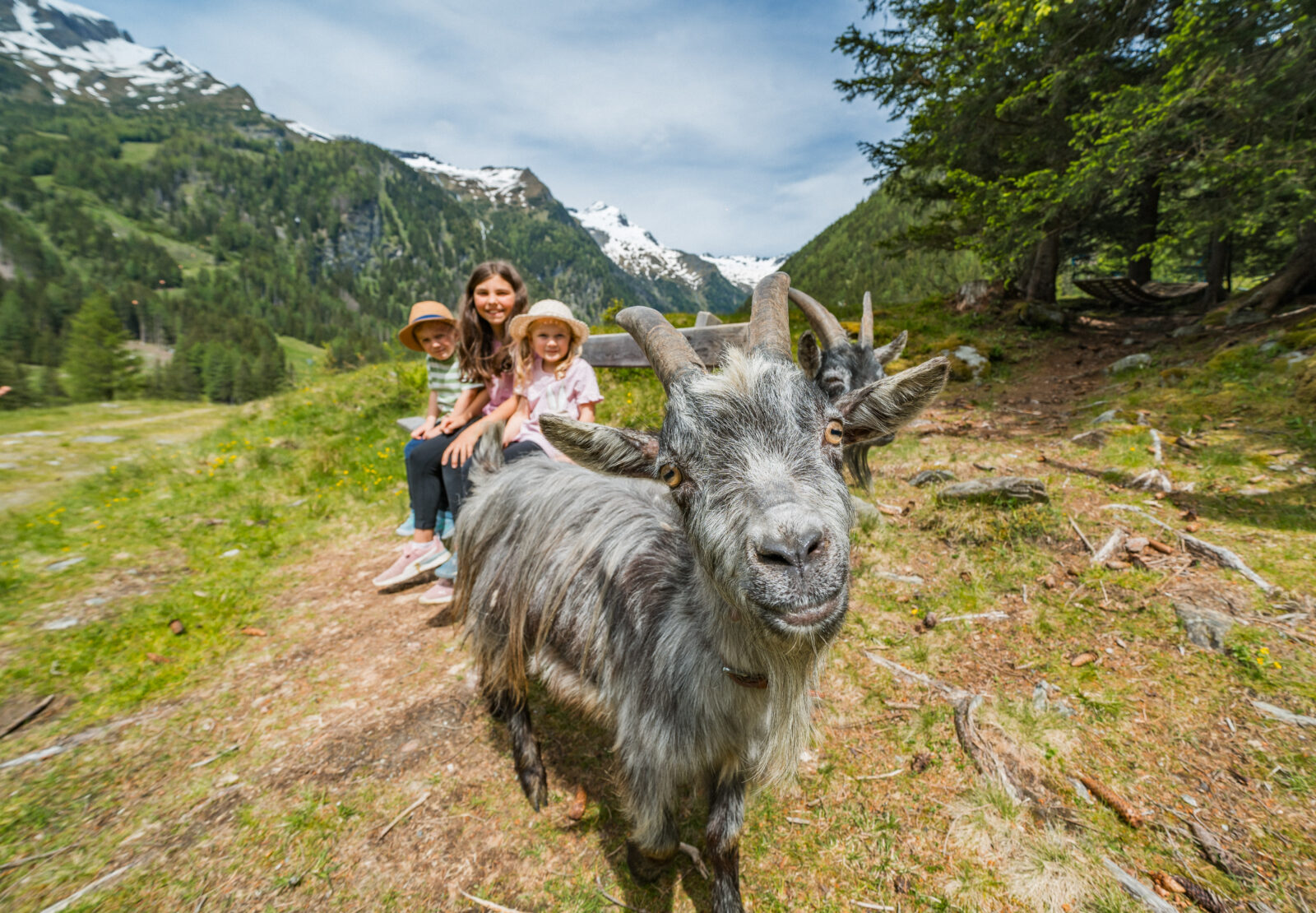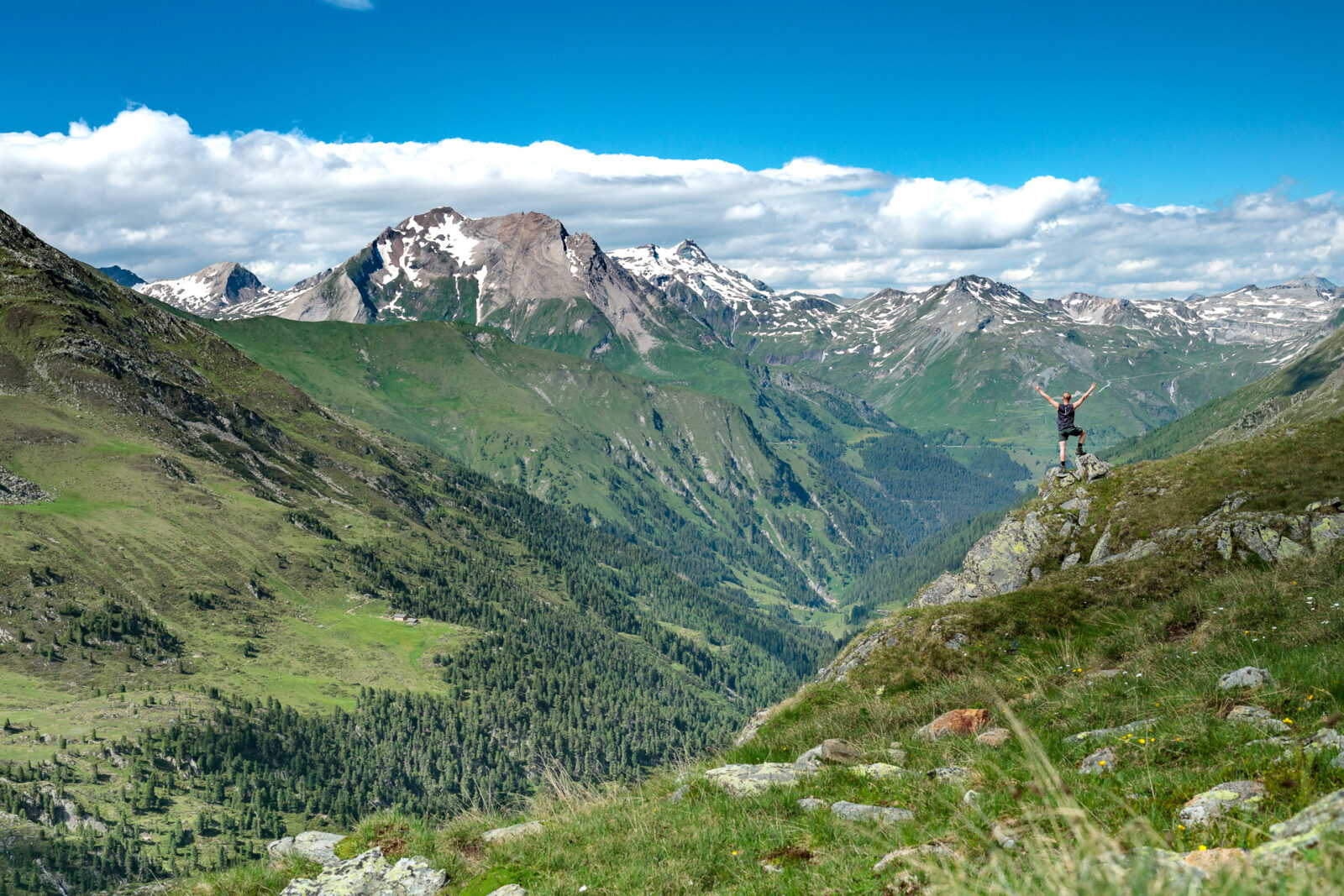
Hohe Tauern National Park
The largest protected area in Central Europe
1,856 km² area is a remarkable figure, especially considering the size of an alpine protected area.
The Hohe Tauern National Park extends over the three provinces of Carinthia, Salzburg and Tyrol and is home to a variety of remarkable animals and plants on its more than 1,800 km², which is why it is also the largest protected area in Central Europe. Immerse yourself in this fascinating world!
The Hohe Tauern National Park
You are currently viewing a placeholder content from YouTube. To access the actual content, click the button below. Please note that doing so will share data with third-party providers.
More InformationYou too can be...
...be enchanted by the natural space of the Hohe Tauern National Park and immerse yourself in the breathtaking world of ibex, golden eagle and co. Then become our guests and spend your next vacation in our region.
266
Mountain top
878 km
Hiking trails
551
Mountain lakes
approx. 250
Glacier
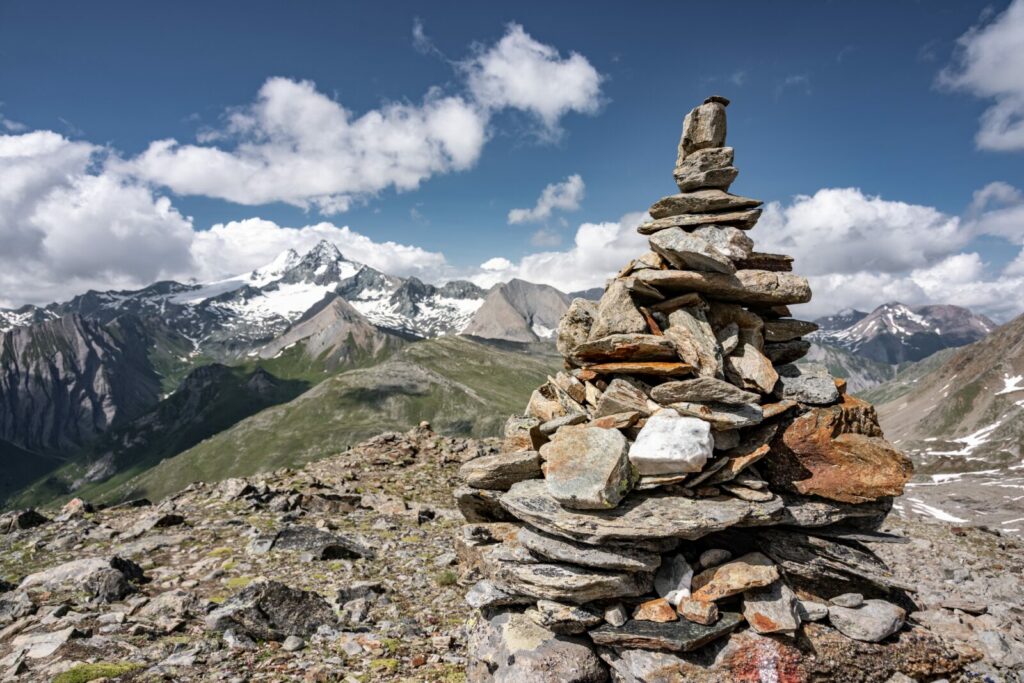
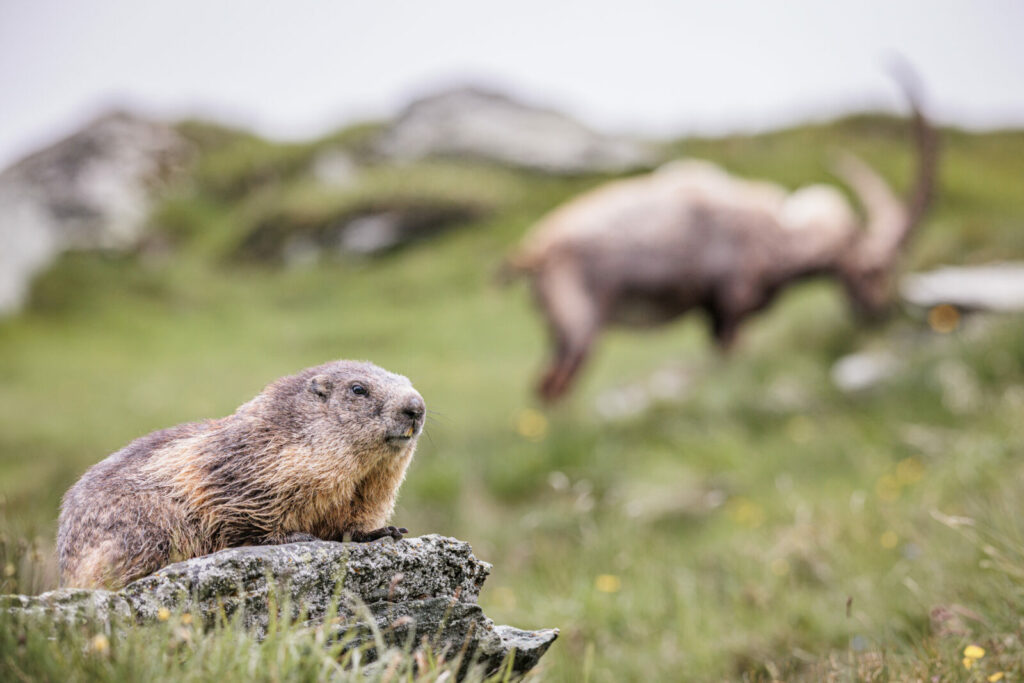
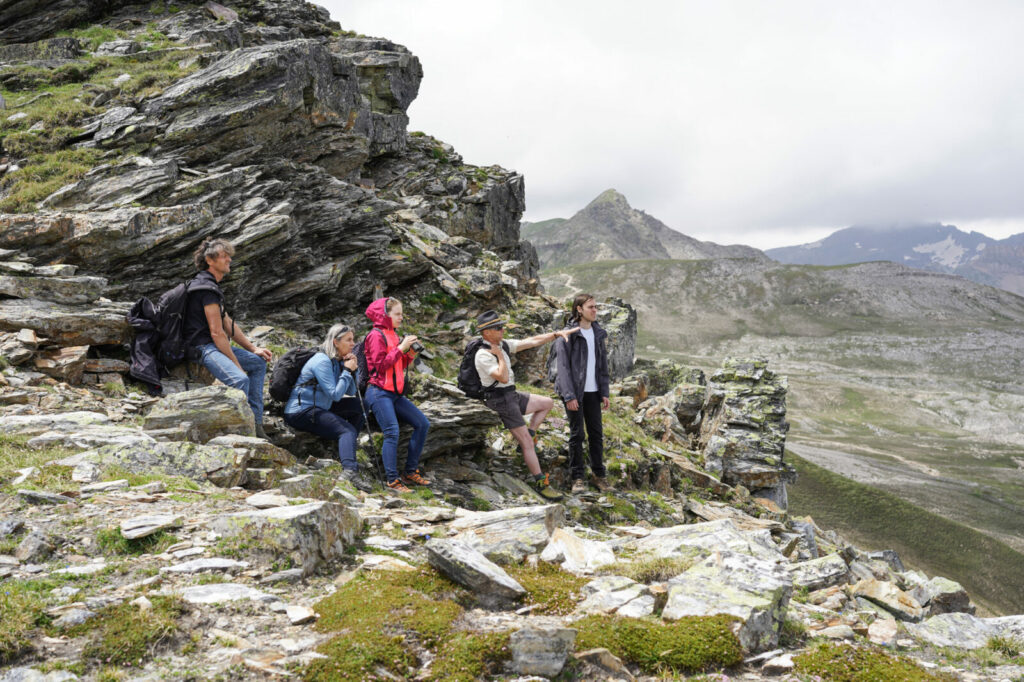
Oldest national park in Austria
The largest protected area in the Alps is not the only superlative that the Hohe Tauern have to offer. Following the example of the large national parks in the USA, the governors of Carinthia, Salzburg and Tyrol decided in the early 1970s to establish Austria's first national park in the Hohe Tauern.
Things to know about the Hohe Tauern
- Formation began about 12,000 years ago with the recession of the ice
- With an area of 1,856 km², the largest protected area in Central Europe
- Extends across provinces of Carinthia, Salzburg, East Tyrol
- 878 km of hiking trails in the province of Carinthia alone
- 266 mountain peaks, 551 mountain lakes, approx. 250 glaciers
- Highest mountain in Austria: Großglockner 3.798 m
- 100 km from west to east, 40 km from north to south
- 1981: Foundation of the park in the province of Carinthia
- 75% of the area must be withdrawn from economic use
- Youth research: Junior rangers between 13 and 15 years are wanted
- And much more ...
Animals and plants
Fauna and Flora in the Hohe Tauern National Park
Animals and plants, fauna and flora or whatever you want to call it, they really bring the Hohe Tauern National Park to life. Their symbiosis creates life in the high mountains and their coexistence in the sensitive natural area of the Hohe Tauern is the whole special experience that can be experienced here.
over 10,000
Animal species
over 3,500
Plant species
365 days/year
to watch
With open eyes through nature ...
... you should be on your way to discover the great whole of the Hohe Tauern natural area. It's not just the rough division of the landscape, the climatic differences also create a mixture of habitats that is unique in the Hohe Tauern. The interplay of forces creates the basis for a diverse flora and fauna that you can marvel at in the Hohe Tauern National Park.
The wildlife of the Hohe Tauern
The Hohe Tauern National Park is home to over 10,000 animal species. This diversity is the result of multi-layered, interesting developments - partly evolution or emergence, but very likely also immigration or displacement have led to today's populations. How the animal world deals with the harsh winters in the Hohe Tauern varies. On migrations many animals avoid the severe frost in the high mountains, others remain in the cold or hibernate.
The "Big-Five" of Hohe Tauern National Park
No, we are not talking about a big game safari in the home territory of the Hohe Tauern... However, the National Park would not be one of the most interesting habitats in the Alps if it did not have its Big Five to present. We are talking about the bearded vulture, golden eagle, ibex, marmot and chamois. If you want to see these Big-Five and experience them in the wild, you should take a closer look at the ranger programs...
Flora of the Hohe Tauern
Let's move on to the flora: the vegetation in the Hohe Tauern National Park can rightly be described as "diverse". The Hohe Tauern is home to up to one third of all plant species found in Austria. After all, the national park is not only high mountains, due to its different climatic conditions, the entire national park offers many habitats for a variety of creatures. Edelweiss , wolf lichen, the Scheuchzer wool grass or the Swiss stone pine are some well-known examples.
The habitats of the Hohe Tauern
To explain where you can find which plants in the Hohe Tauern, we divide the park into four altitudinal levels: the montane level (700 - 1,700 m) is characterized by deciduous, mixed and spruce forests. The subalpine level (1,600 - 2,300 m) is home to mainly larch-mirch forests, while in the alpine level (2,300 - 3,100 m) we find mainly alpine grasses and shrubs. In the nival stage (3,000 m and above) only distinctive specialists have a chance, which have perfectly adapted to survival at high altitude.
Visitor Centers
Exhibitions & Info Points Hohe Tauern National Park
The visitor centers, exhibitions and information points in the Hohe Tauern National Park are where you can find information, inspiration and valuable details about nature, fauna and flora. There are six visitor centers around the national park region in Carinthia.
Overview of the six visitor centers
BIOS National Park Center Mallnitz
This is where state-of-the-art technology meets breathtaking nature. The interactive exhibition "univerzoom nationalpark" puts all the highlights of the Hohe Tauern at your feet. Here you start your personal journey into the wild, to animated rockfalls, into the mysterious wilderness or on a visit to the species-rich animal world of the Hohe Tauern.
The BIOS National Park Center Mallnitz is open all year round (see website for exact times). Free admission with the Kärnten Card and National Park Partner Card.
"House of the ibexes" Heiligenblut
As the first visitor facility with a focus on ibex, the house invites you to enjoy a comprehensive range of information and experiences on the trail of the alpine ibex. At the heart of this offer is the exhibition "The king and his throne", which lets you dive deep into the world of the high mountains.
The House of the Ibex is open from December to April and from May to October. Free admission with the Kärnten Card and National Park Partner Card.
Emperor Franz Josef Heights Visitor Center
This is where the Grossglockner High Alpine Road ends, but the great natural experience in the Hohe Tauern begins. Where the Gamsgrubenweg trail begins, you can enjoy a sensational view of the Großglockner and the Pasterze, the largest glacier in the Eastern Alps. The visitor center also houses the highest automobile and motorcycle museum in the Alps, various exhibitions on the subject of "Glacier" & "Mountain" and an interesting permanent exhibition on Sepp Forcher, including the Grossglockner cinema. Free panoramic tours with the National Park Rangers are also offered.
Wilhelm Swarovski Observatory
It's the view that counts here. The Wilhelm Swarovski Observatory is a unique viewing platform from which a magnificent view of the Großglockner comes into focus. With the help of optical equipment from Swarovski, there may also be opportunities to observe great animals such as ibex, marmots or golden eagles in the wild.
National Park Info Point Obervellach
Here we have a small but fine exhibition in the Oberstbergmeisteramt on the main square of the national park community of Obervellach. Hard to miss, the info point offers interactive stations that take you to interesting places in the national park. In addition, the Obervellach Info Point is dedicated to the exciting stories of the center of gold mining in Obervellach. An exciting thing for the whole family.
National Park Info Point Winklern
The information center with store and passage to the toll tower Winklern presents itself in a clear contemporary ambience. A panoramic map and hiking tips tell of the natural and cultural treasures of the region and encourage guests and visitors to venture further into the beautiful protected area and get to know it better.
Info hotline
+43 4824 2700
You are currently viewing a placeholder content from Default. To access the actual content, click the button below. Please note that doing so will share data with third-party providers.
More Information


